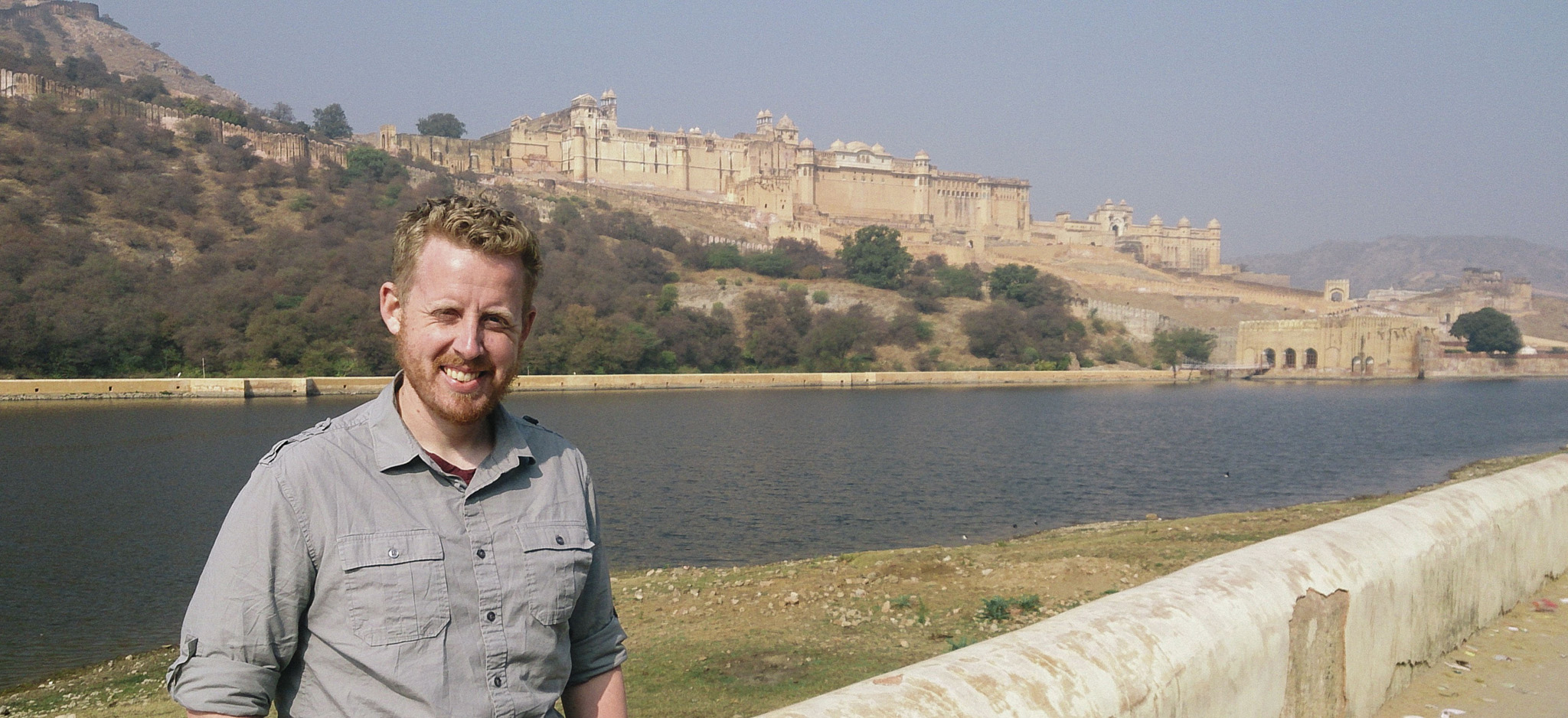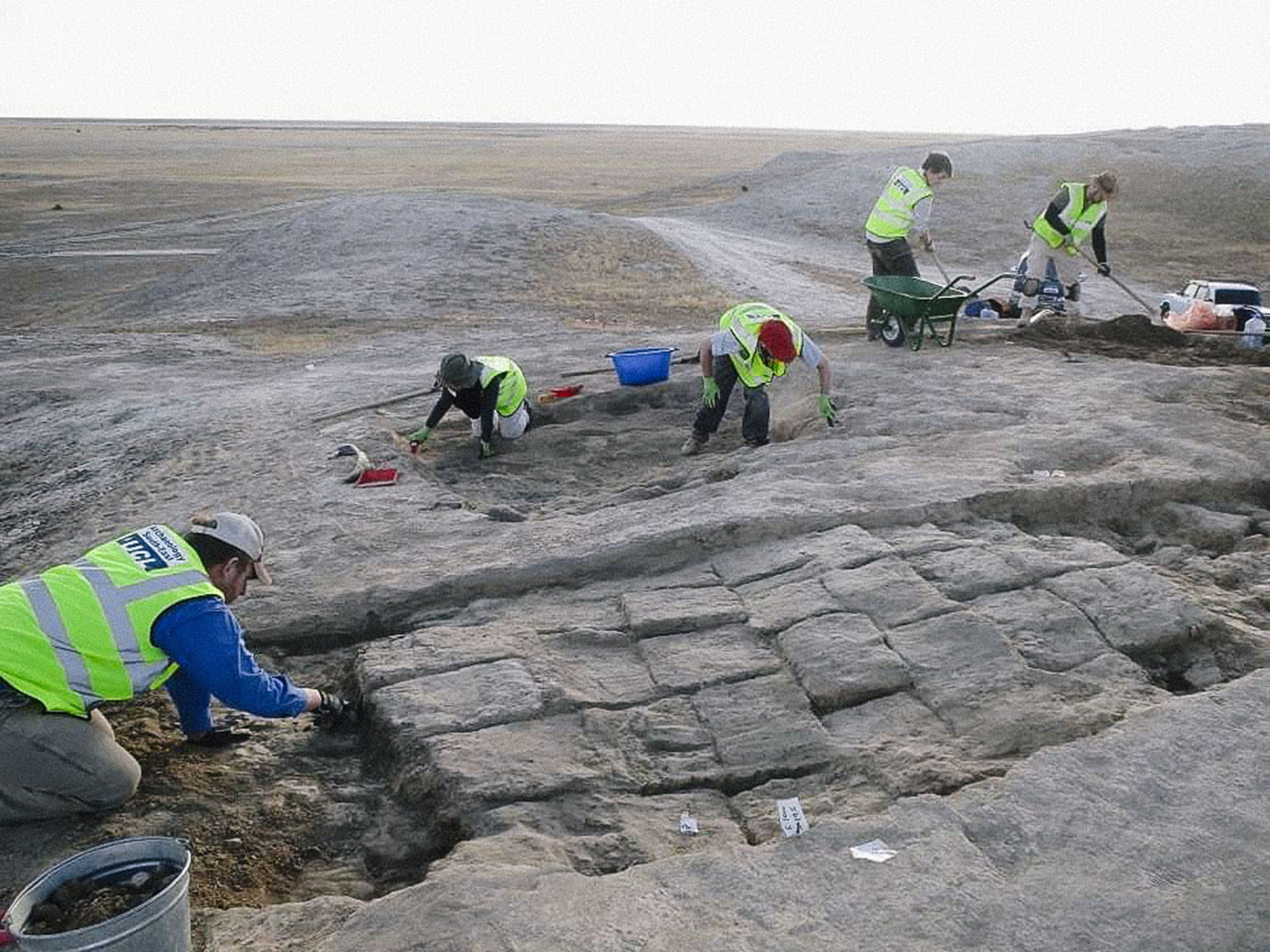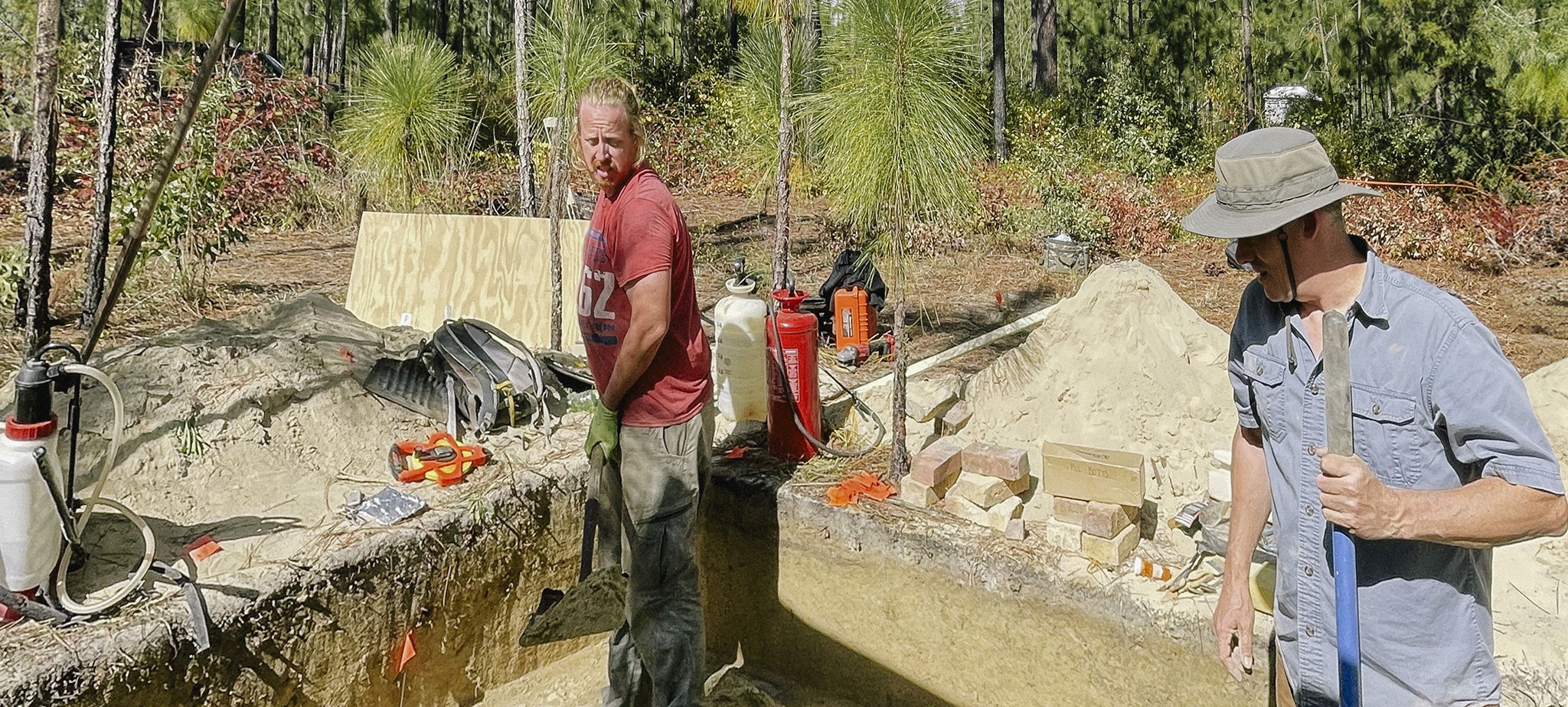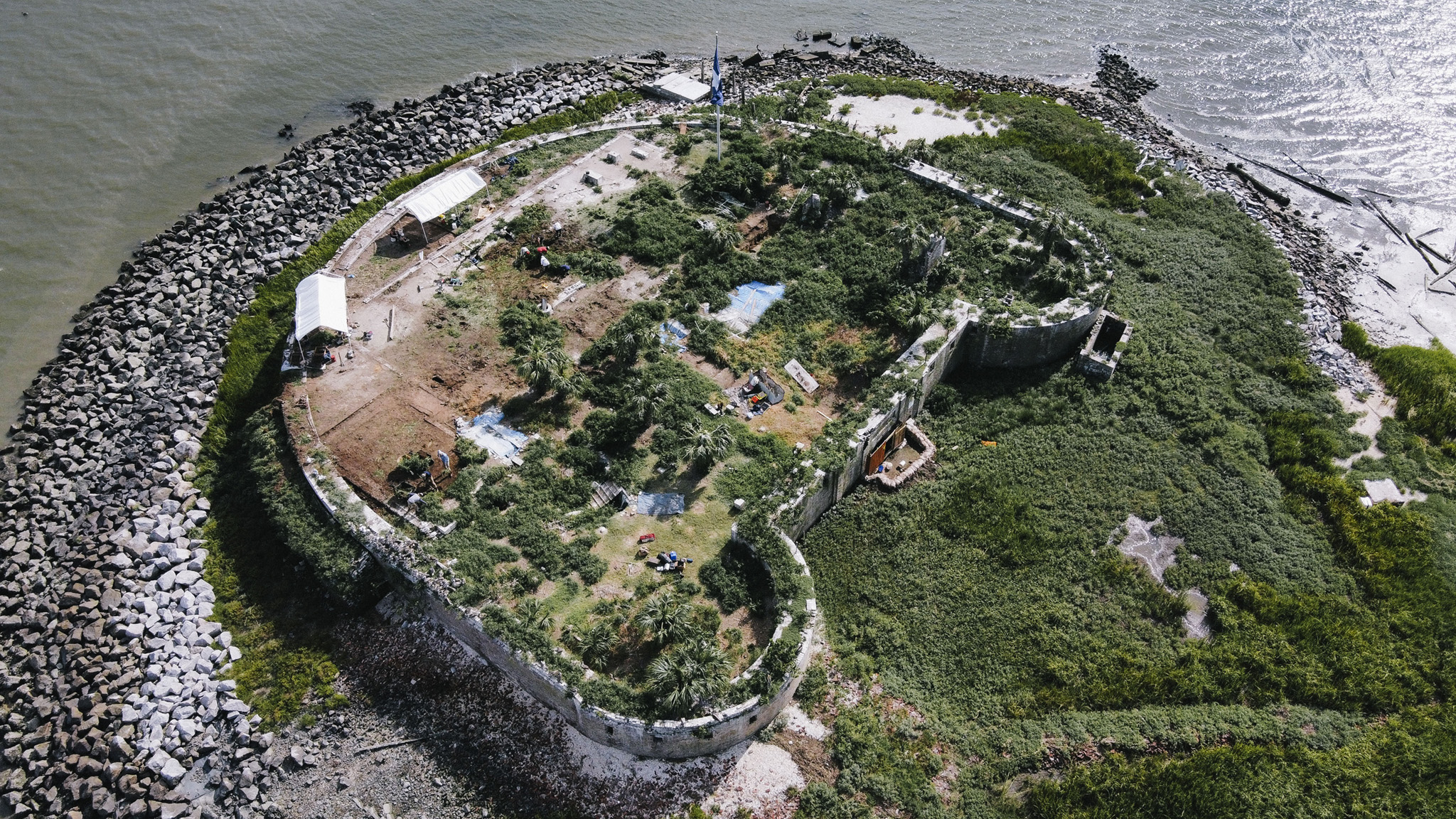There’s a New Curator at The Charleston Museum!
John Fisher in front of Amber Fort, Amer, India, 2014.
We are happy to officially introduce the new Curator of Archaeology at The Charleston Museum, John Fisher. John specializes in historic and conflict archaeology and is a Registered Professional Archaeologist. He received his B.A. in Anthropology from the University of South Carolina (2013) and his M.A in The Archaeology of the Arab and Islamic World from University College London (2017) after having served in the U.S. Army. While earning his M.A., he worked on sites from late antiquity and the early Islamic periods in several countries throughout the Middle East and Central Asia. Additionally, he has directed and participated in digs across the southeastern United States, where he has worked on everything from precontact to contact periods along with historic plantations, cemeteries, and battlefields, to name a few.
John Fisher, lower left, excavating the citadel floor at Kuyk Mardan, Otrar, Kazakhstan during a UCL field school in 2015.
John is a South Carolina native who was born and raised in Blythewood, South Carolina. He spent a large portion of his childhood traveling across the state to historic sites and battlefields with his grandparents from Camden, South Carolina. He frequented sites like the Camden Battlefield and often traveled to Charleston to visit historic homes, Fort Moultrie, Fort Sumter, and anywhere that Castle Pinckney could be seen from.
John Fisher and Dr. Bill Stevens excavating a unit at Camden Battlefield, Kershaw County, South Carolina.
Since 2017, John has worked on archaeological sites across North and South Carolina and in Florida, Alabama, and Mississippi. Some of his most recent work has been on 17th century contact period sites related to the DeSoto expedition as well as American Revolution battlefields at Fort Motte, Parker’s Ferry, and Camden. While at Camden he worked with an interdisciplinary team to excavate battlefield finds and remains of soldiers hastily buried in mass graves for analysis and reinterment with full military honors. A project that as veteran and descendant of someone lost during the American Revolution, he is honored to have taken part of. Additionally, he has used remote sensing at several sites across the state to identify unmarked graves and archaeological components, one of which was with the Gullah Geechee community at a cemetery in the Lowcountry.
Drone picture of Castle Pinckney during the 2022 field season led by John Fisher and Giles Dawkes (image courtest of Zach Markin).
Outside of the Museum, John serves as the director of the Lost Fort of Castle Pinckney Project, alongside Giles Dawkes of UCL, and at the Saint James Parish Church in Goose Creek, South Carolina. He hopes to combine his passion for conflict archaeology with the work of his predecessor, now Curator Emeritus, Martha Zierden, on the study of 17th to 19th century Charleston and the Lowcountry. John is proud to finally call The Charleston Museum and the Lowcountry home.





